You should apply winter fertilizer in the late fall while the lawn is still green. The grass is still actively growing at this stage and can use the fertilizer’s nutrients. By providing it before the snow, the grass shouldn’t wither.
All homeowners should be careful when applying their winter fertilizer because it can significantly impact how their lawn looks come spring.
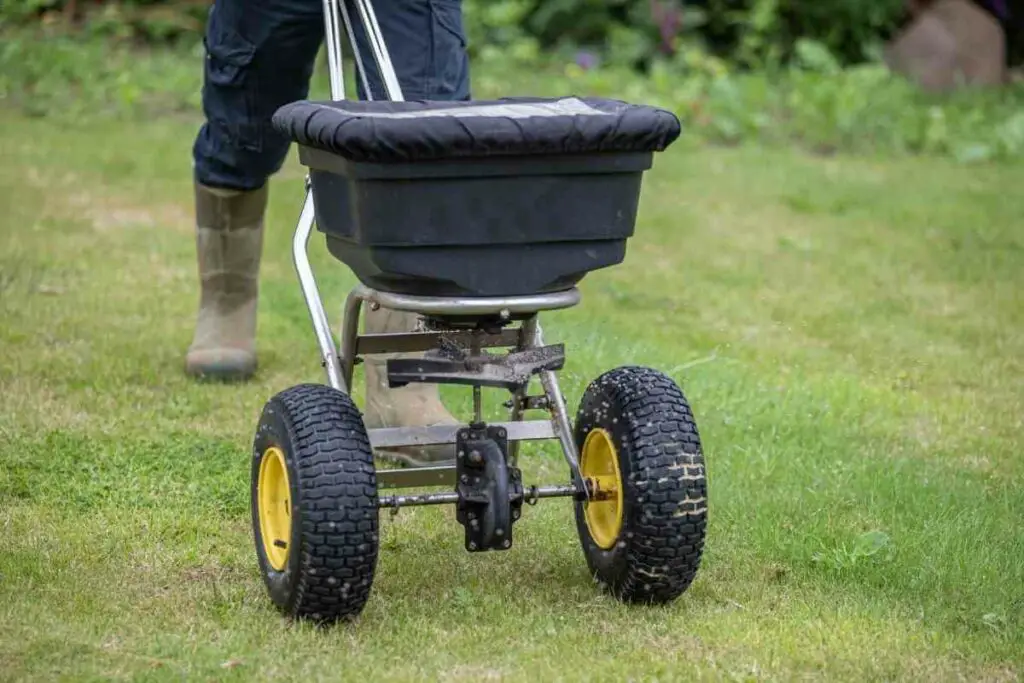
There’s more to learn, so you can give your grass the nutrients it needs.
Table of Contents
When’s the Best Time To Apply Winter Fertilizer?
Where you live can impact the best time to apply a winter fertilizer.
As a general rule, you want to use the fertilizer after the grass stops growing. You’ll know it’s time when you don’t have to mow it anymore.
Although, you need to act quickly before the grass turns brown.
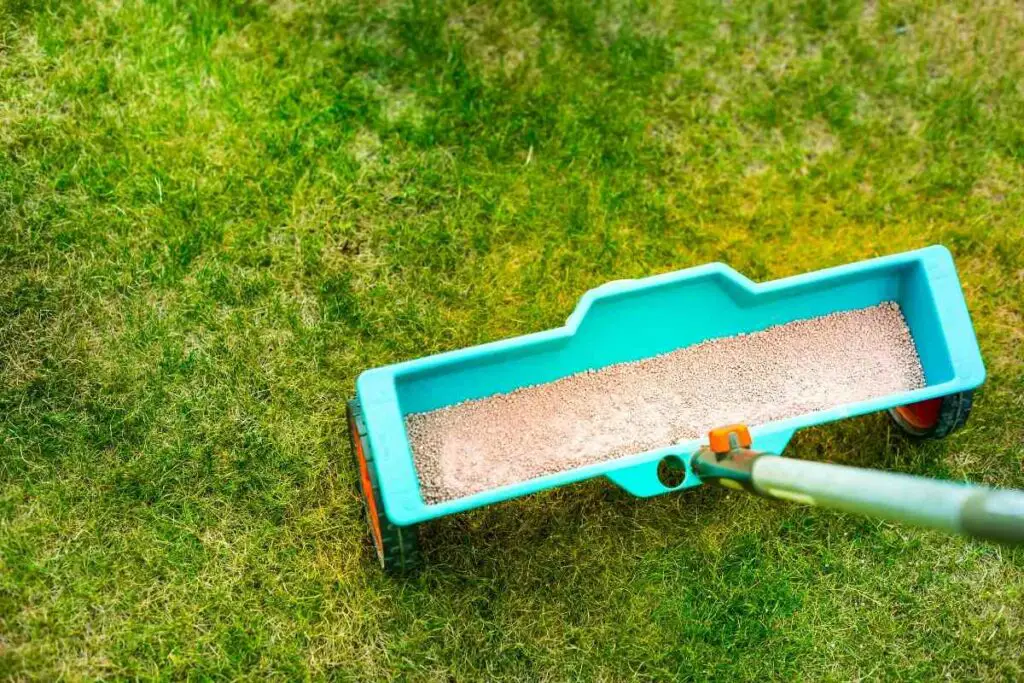
At this stage, the grass can still absorb the nutrients quickly and continues growing under the earth’s surface.
When it starts to warm up outside, you’ll notice that your lawn looks much greener and healthier than the previous spring.
If you live in the Northern U.S., you probably have cool-season grass on your lawn. You’ll want to fertilize it in late September. Southern areas can wait until November or even December to apply theirs.
Overall – Late fall is usually the best time to apply a winter fertilizer. You’ll want to ensure you use it correctly to get great results by springtime.
What is Winter Fertilizer?
Winter fertilizer is when you apply a lawn care treatment in the very late fall, also known as winterizing.
Landscapers winterize a lawn after the grass stops growing for the year, encouraging it to store nutrients in the roots.
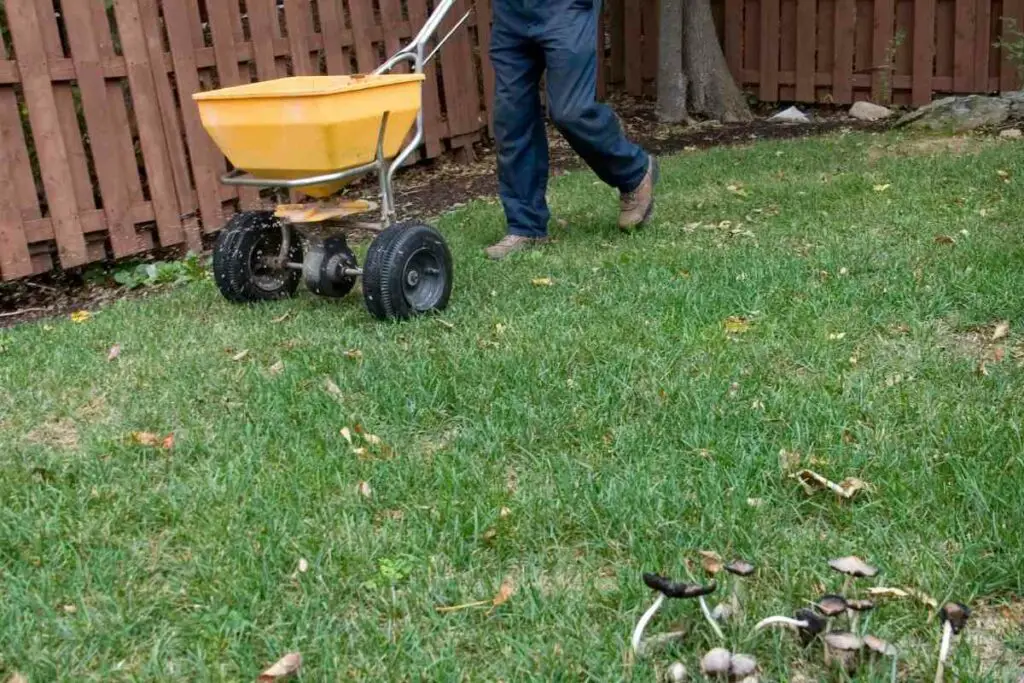
With the extra nutrients in their roots, your grass should have no problems surviving until spring.
It also makes your lawn much greener and prevents dead spots from appearing after the ground thaws.
If you’re new to fertilizing, there are a few points during the year when you want to feed your yard.
However, the most critical applications are during the spring and winter, so you shouldn’t skip winterizing.
Is Winter Fertilizer Necessary?
Many landscaping experts say that late fall or early winter is one of the most important times to apply fertilizer to your lawn.
It gives the grass enough energy to grow until the ground freezes. Plus, winter fertilizer helps the grass store enough nutrients to live throughout the winter.
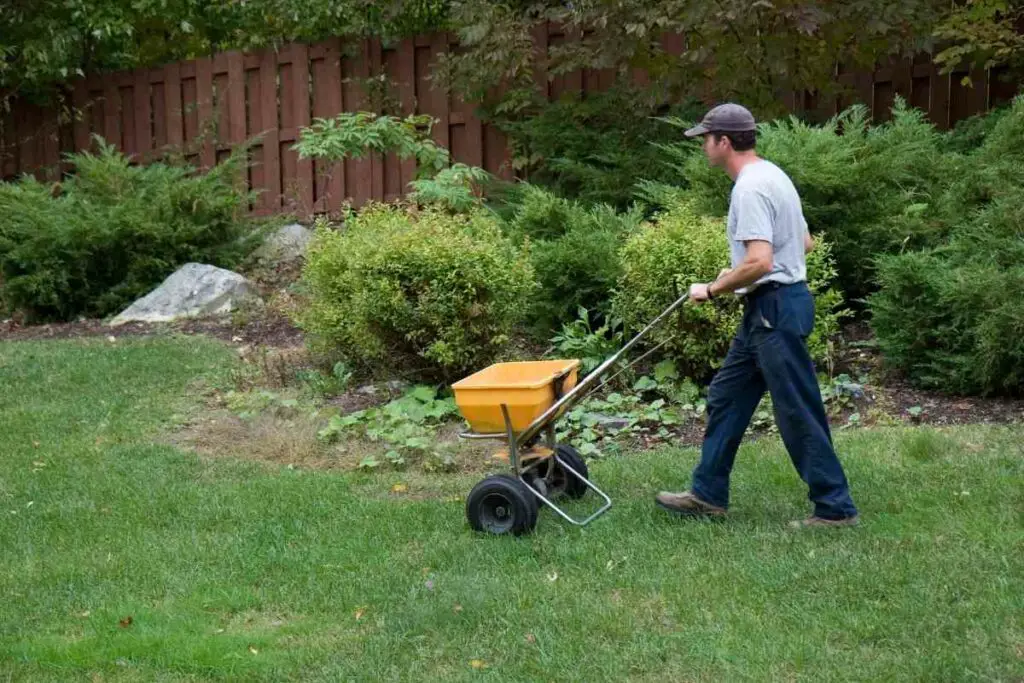
The grass stores the excess nitrogen in its roots, which gives it a growing boost in the spring.
Without a winter fertilizer, your grass won’t bounce back as quickly after the ground thaws, leaving it looking dull and lifeless.
Not winterizing your yard can also lead to several issues. You might notice that your grass turns brown, becomes thin, or dies in patches.
Works Well – You can avoid these common winter problems by simply using a fertilizer earlier in the season, so many landscapers view it as a requirement.
It’s almost always a good idea to fertilize before the temperature drops. Your grass is sure to appreciate having the nutrients it needs to make it to spring!
How Do I Apply a Winter Fertilizer?
Since you know when to apply your fertilizer, you’ll want to know the most efficient steps to get the job done.
You should wait until the day after it rains, so the soil is moist and can absorb the fertilizer easier. You’ll also know that it shouldn’t rain again for a few days, which would wash away all your hard work.
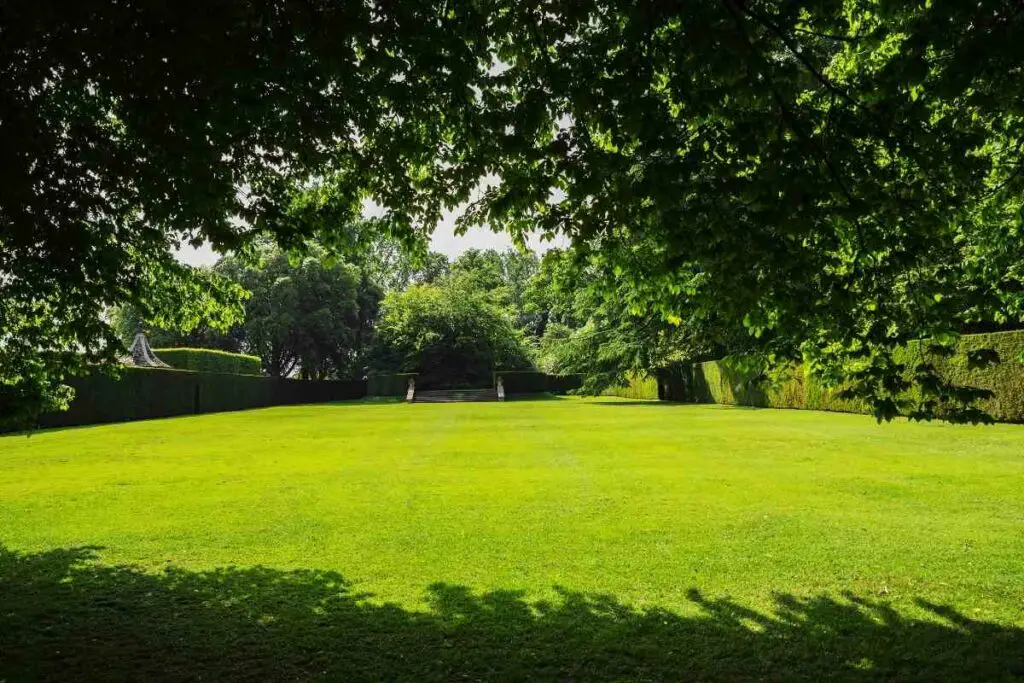
Using a fertilizer spreader, a garden tool that distributes materials evenly across lawns and garden beds, is also good.
The spreader makes winter fertilizing easier on you while giving better results. Plus, you can find small, cost-efficient, handheld options for small yards if you don’t want a large push spreader.
Knowing how much fertilizer your lawn needs before you start is essential. You’ll want to consider how much nitrogen your grass needs depending on what type it is.
Most people need two pounds of winter fertilizer per 1,000 square feet of lawn. Although, you’ll want to double-check because too much can quickly kill your grass.
In Short – You can use tools to make applying your winter fertilizer simpler. While you can always spread fertilizer by hand, you’re sure to appreciate having equipment to assist you.
What Should I Use for a Winter Fertilizer?
You’ll need to use a fertilizer that provides your lawn with nitrogen.
Most fertilizer products list their nutrients on the side using the letters N, P, and K, which stand for:
- nitrogen
- phosphorus
- and potassium
Your grass should only need nitrogen, although you can perform a soil test to see if it needs the other nutrients.
- Helps your lawns to survive the winter stress
- Encourages a stronger, deeper root system
- Easy to use
- 2% iron for deep greening
- 50% controlled release nitrogen
- Model: GT58105
- 1 Pack
- Continuously feeds for up to 16 Weeks
- Covers up to 5,000 square f
Most places don’t allow you to use phosphorus-rich fertilizer because it can harm the environment. Make sure you know the landscaping rules in your state before you purchase a fertilizer!
The best option would be a slow-release fertilizer with more nitrogen than the other two ingredients.
Fertilizers list their ingredients in this format: N-P-K. That means you want to find a product with a higher N value than the others.
If you notice any thin areas in the grass, you can apply some compost and grass seed there. Doing so encourages more lawn growth and fills those spots with more grass.
How Can I Make a Winter Fertilizer?
If you make your own winter fertilizer, you need it to be rich in nitrogen.
One good option is to use grass clippings because they contain high amounts of this nutrient.
During the Year – You can collect the cut grass and add it to compost or leave the grass on your lawn. It will naturally fertilize your yard as it breaks down.
Composted manure is another excellent option.
You should never use new manure as it can burn your lawn, but composting it first makes it safe for your property. It’s easy to use, too— you apply it the same way you would a store-bought fertilizer.
Overall, you can always make your own fertilizer instead of using one from a store. It’s often healthier for your yard, and you know it doesn’t come with any surprise chemicals.
Give winterizing with DIY fertilizer a try if you’re interested in composting.
How Often Should I Fertilize My Lawn?
Most landscapers recommend fertilizing at least one time per year.
However, doing so four times a year will give you a much greener lawn.
Here’s when you should fertilize your grass:
- In the early spring, between February and April.
- In the late spring, between April and June.
- In the summer, between June and August.
- In the late fall or early winter, between September and December.
You must always wait at least six to eight weeks between fertilizing.
If you do it too frequently, you’ll only end up causing more harm than good to your lawn. Over-fertilizing can lead to burning the grass, causing it to appear yellow or brown— or even dead grass.
If you’re fertilizing your lawn, you likely want to take good care of it. So, make sure you don’t do it too often!
Watering your grass after over-fertilizing can help it recover faster. Still, you’ll need to act fast so it doesn’t die.
Conclusion
You should apply winter fertilizer in the late fall while the lawn is still green.
Winter fertilizer is when you apply a lawn care treatment in the very late fall, also known as winterizing.
Most fertilizer products list their nutrients on the side using the letters N, P, and K, which stand for:
- nitrogen
- phosphorus
- and potassium
Your grass should only need nitrogen, although you can perform a soil test to see if it needs the other nutrients.
- How to Dry Basil Leaves: A Professional Guide
- Is an Avocado a Fruit or Vegetable? Simple Answer and Explanation
- Does Pineapple Have Seeds? Exploring the Anatomy of Pineapples
- Blooming Through Winter: Can I Grow Vegetables Indoors in the Winter?
- What Can You Grow in a Greenhouse All Year Round: A Guide to Year-Round Greenhouse Gardening
- Are Blueberries Blue? Debunking the Myth of Their Color



















